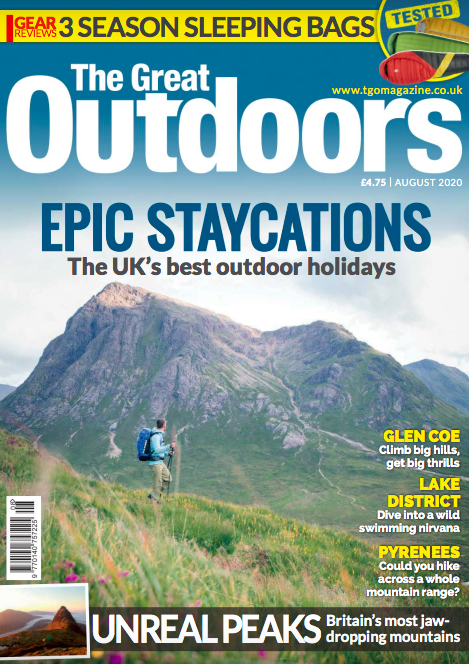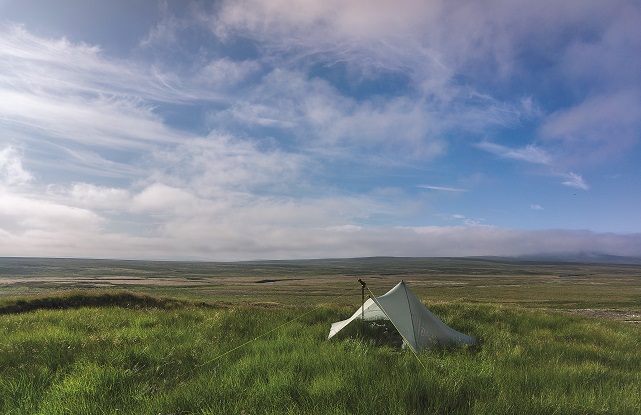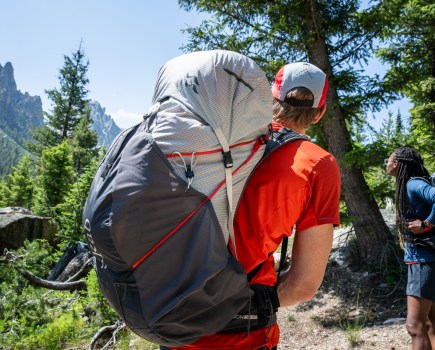With ‘fly camping’ on the rise, here’s how to practice Leave No Trace wild camping.
There’s been a huge increase in the numbers of people out wild camping and enjoying the hills since lockdown measures eased. That’s potentially a great thing – but it has also been associated with a big increase in littering, ‘fly camping’ and general destruction.
It’s possible to enjoy the outdoors without adversely impacting wildlife, the landscape and other people by sticking to the seven principles of Leave No Trace.
- Plan ahead and prepare
- Travel and camp on durable ground
- Dispose of waste properly
- Leave what you find
- Minimise the effects of fire
- Respect farm animals and wildlife
- Be considerate of others
Here’s how to apply those principles to wild camping.
Choosing a campsite
Look for a site that you can occupy without damaging vegetation. Leave no Trace Master Educator Myles Farnbank says:
“If your chosen camp site is already heavily impacted by previous visitors, keep your tent within the impacted area. Further from the beaten track where there is no sign of people having camped in the location previously, spread your tents out to reduce the impact from group camping, and choose a site with durable ground cover (bare rock, sand or dry grass) for your communal area.
“The areas that are most sensitive are those between the two. If you find a place that is just starting to show signs of impact, then it is likely to recover into a pristine situation if left fallow – so camp elsewhere.”
Calls of nature
It’s the big question of low-impact wild camping – what do you do when you need to do a poo?
“Going for a ‘number two’ can have a significantly damaging impact on both health and water quality,” explains Myles. “Move well away from your camp site and at least 50m from any permanent bodies of water. The leave no trace guidance is 75m away, which is a considerable distance.
“Some organisations recommend as little as 30m distance from fresh water, which is fine if done properly using a cathole but 50m is a safer distance. A cathole needs to be at least 15-20cm wide and 15-20cm deep, to avoid attracting flies and other animals and to ensure the waste is deep in the humus area of the soil.”
Use toilet paper that is unscented, unbleached and recycled, because it breaks down more quickly. And never put wet wipes down catholes – they take a long time to decompose. Bring a container and carry them out instead.
Are fires ever okay?
Barbecues and open fires are among the main causes of moorland wildfires.
“Carrying a stove means you shouldn’t need to light a camp fire,” says The Great Outdoors gear editor Chris Townsend. “Only in places where you can do so without leaving a trace and where there’s no chance of starting a wild fire should you even consider a camp fire – and that’s if it’s allowed.
“Never build a fire on vegetation, dead or alive (this includes pine needles), or surround a fire with a ring of rocks. Fires can be built on gravel or sand, such as found on beaches or beside rivers. All wood should be burnt to a fine ash and this scattered when you leave.”
Wash this way
It’s important to do your washing up away from water sources.
“Take a water bladder to the river or loch, fill it up, bring it to your camp area and do your washing away from the water source,” advises Myles. “Put a bit of water in the pot then scrape it out with your finger, a stick or spoon. Then take a cotton hanky and put it over the pot. Find an area where there’s plenty of vegetation and then walk. As you’re walking, turn the pot upside down. The water will come through the hanky and all the food particles will get caught within it.
“Ensure that the smelly water is spread over as big an area as possible. The bits of food can then be scraped off the hanky into a waste bag or plastic container and the hanky can be hung outside a rucksack to dry. If your pot is still greasy, use a very small amount of biodegradable washing-up liquid, such as Ecover, which is plant-based. Pour it into your pot with a little bit more water, wipe it around, and then move away from camp, find an area with lots of vegetation and then do a big vigorous side-to-side swoosh to spread out all the water.”
When it comes to washing yourself, avoid perfumed soaps and avoid concentrating any of the soaps and oils from your body in one spot. Diluting toothpaste by spitting into a mug of water and spreading the diluted spit out over a large area is a good idea as well.
Leave the site as you found it
“Sites should not be altered in any way,” says Chris Townsend. “The idea is to have minimum impact so the area still looks natural and wild. Camp on bare ground or short coarse vegetation if possible – these show impacts less than softer, longer vegetation (and are usually drier too). If you do move any twigs or stones scatter these back over the site when you leave.
“The common practice of putting rocks on pegs shouldn’t be necessary if you pitch your tent properly and have good pegs. If you do this put the rocks back where they came from afterwards.
“After packing up camp, check the area for small items of gear and bits of litter to ensure that nothing is left behind. Once you walk a short distance away and look back it should be impossible to tell anyone has camped there.”
Myles Farnbank is Director of Training for Wilderness Scotland, an Associate Instructor at Glenmore Lodge and a Master Educator in the principles of Leave no Trace.
 Subscribe to The Great Outdoors
Subscribe to The Great Outdoors
The Great Outdoors is the UK’s original hiking magazine. We have been inspiring people to explore wild places for more than 40 years.
Through compelling writing, beautifully illustrated stories and eye-catching content, we seek to convey the joy of adventure, the thrill of mountainous and wild environments, and the wonder of the natural world.
Want to read more from us?
- Get three issues of the magazine for £9.99, saving 30% with free UK home delivery.
- Take out a full subscription at just £15 for your first six issues.
- Order the latest issue and get it delivered straight to your door for no extra cost.
- Catch up on content you may have missed by buying individual back issues with free postage and packaging.







